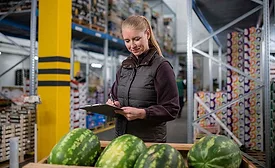Home » Publications » Food Safety Magazine
Our Publications
Please select a publication below.
Food Safety Magazine

October/November 2023
Cover Story
Back to TopFeatures
Back to TopAre ‘Standard’ Methods to Detect Non-Cultivable Pathogens in Food and the Environment Fit For Purpose?
Food system stakeholders face inherent challenges in managing non-cultivable foodborne pathogens
October 5, 2023
Cracking the Code for High-Quality Eggs: Ensuring Proper Egg Handling and Storage
Many factors can influence the microbial, physical, and functional qualities of eggs through each phase from production to the end user
October 5, 2023
Pork and Prejudice: How the Industry's Science-Driven Approach Outshines Salmonella Standards in the Pursuit of Improving Public Health
Regardless of the proposed Salmonella performance standards, the pork industry has consistently taken proactive measures to address and mitigate Salmonella contamination risks for years
October 6, 2023
Columns
Back to TopEFSA's WGS System: Enhancing Food Safety in the EU by Connecting Genomic Data
The establishment of a comprehensive surveillance program that harnesses the benefits of WGS requires a coordinated approach within the framework of One Health
October 6, 2023
FSPCA Preventive Controls Updated Curriculum Highlights—Advantages for Food Safety Management
The issuance of FDA guidance documents and feedback from FSPCA stakeholders prompted FSPCA to update and issue a new version of its training curriculum
October 6, 2023
Food Safety Culture and Its Impact on Pest Management
Your sanitation team is critical to the success of your IPM program
October 9, 2023
Digitized Supply Chains Deliver Improved Visibility, Traceability, and Happy Customers
Technology upgrades are needed to serve increasingly complex, global markets more efficiently and effectively
October 6, 2023
Rings of Defense: Justifying and Negotiating Food Safety Actions to Regulators
In the stress of an inspection where a noncompliance is found, it is important to consider all avenues for corrective actions
October 9, 2023
Evolution of FDA's Regulation of Packaging for Infant Food
FDA has been adjusting its industry guidance for Food Contact Notifications and Food Contact Substances for infant formula since the passage of the Infant Formula Act of 1980
October 9, 2023
Food Safety Insights: Food Safety Priorities—Getting ‘Back to Basics'
Pandemic disruptions prevented a greater focus on fundamental issues, to which processors are now returning
October 5, 2023
Safe Bites: Ensuring Ethics Make the Food Menu
Numerous sectors require that their professionals engage with ethical education; why does the food industry not mandate food safety ethics courses?
October 9, 2023
Cybersecurity and Food Defense: Bridging Information Flow Between Business and Government
The most important role of a Food and Agriculture Information Sharing and Analysis Center (FA-ISAC) is to facilitate the flow of information between industry and government entities
October 9, 2023
Never miss the latest news and trends driving the food safety industry
eNewsletter | Website | eMagazine
JOIN TODAY!Copyright ©2025. All Rights Reserved BNP Media.
Design, CMS, Hosting & Web Development :: ePublishing



















